UMMC launches state’s only genetic testing advancement
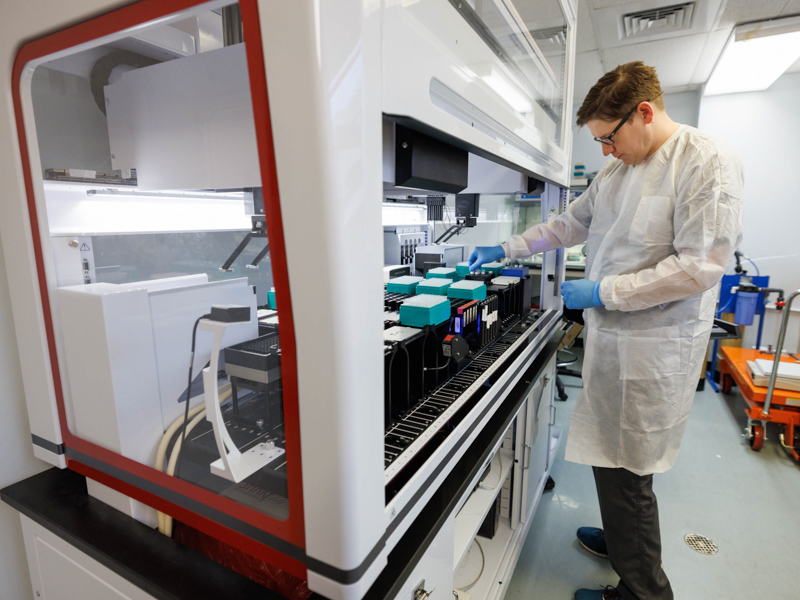
A new laboratory procedure at the University of Mississippi Medical Center allows physicians to assess DNA samples from some cancer patients faster and cheaper than before, all in-house.
The Department of Pathology cut the ribbon on its clinical next-generation sequencing (NGS) machine, a first-in-the-state resource. The new procedure, used with the first patient samples March 9, searches for genetic variants associated with some forms of blood cancer and lymphoma. This testing allows physicians and patients to choose the treatments best suited for their particular genetics and do it quickly.
Dr. Sarika Jain, assistant professor of pathology, leads the molecular pathology lab at UMMC. She says using next-generation sequencing for this purpose is faster and more cost efficient than the older approach, known as Sanger sequencing.
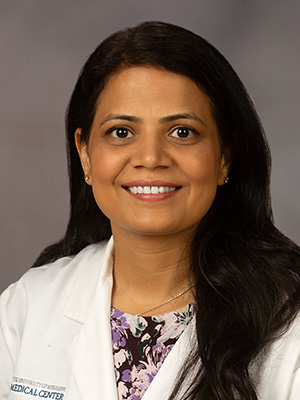
“With Sanger sequencing, you can only look at one gene at a time. But with next-generation sequencing, you can look at multiple genes, including multiple portions of the same gene, all at once,” Jain said.
UMMC’s NGS platform can examine up to 40 genes at a time, using infinitesimally small amounts of DNA that fit in grooves on two-inch-long chips.
The next generation sequencing process requires several hours of laboratory prep, followed by about 24 hours of run-time, depending on the specifics of the case. UMMC’s new ability to do it in-house is also more efficient in time and resources than the previous practice of having an out-of-state lab with NGS capabilities do the work.
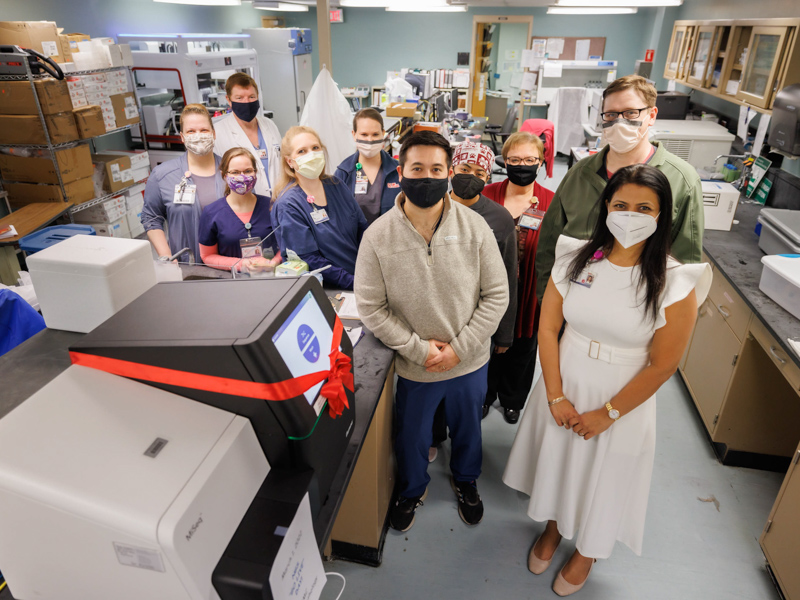
“We were paying a lot of money to send samples out of state for processing,” Jain said. Considering the volume of tests UMMC needs each year, she estimates that bringing the NGS in-house could save the Medical Center hundreds of thousands of dollars yearly.
The testing is especially useful for acute leukemia patients treated by providers in the Division of Hematology and Oncology.
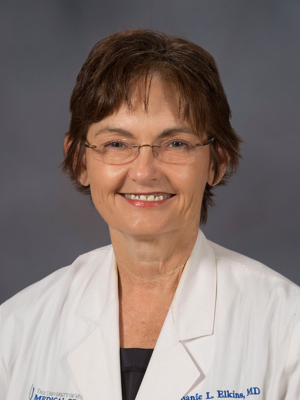
“It’s kind of a prognostic for us: Who would do poorly with standard therapy? Who would do better? Who needs a bone marrow transplant?” said Dr. Stephanie Elkins, the division's director.
“We’ve used the same treatment for years, but in the last five years we’ve had new therapies,” she said. “Some are designer therapies usually based on the next-generation testing. We use this to help us know what’s the most effective treatment, who will need more aggressive therapy or who we can expect to get better.”
UMMC has the only providers who treat acute leukemia in the state, Elkins said. “A few get sent to other institutions, but the majority come to us. Every one of those patients can get the next-generation testing.”
The speed of getting next-generation test results within a day or two because it’s done in house likely won’t in itself affect treatment – but it can be a boon for patients, Elkins said.
“The thing that matters to patients is information,” she said. “We’ve hounded (outside testing labs) quite a bit for results. Having to say ‘we don’t know’ for two weeks means that is hanging over our patients’ heads.
“Having a quick response means they won’t spend as much time in limbo.”
In early 2020, Jain and her team began the process of setting up and validating NGS in the molecular lab. They knew it would take time. Conducting NGS or any other procedure in a clinical lab requires certification from the Centers for Medicare and Medicaid Services program for Clinical Laboratory Improvement Amendments, or CLIA.
“It’s quite an undertaking,” Jain said. For instance, there are rules dictating how to move samples from one side of the lab to another to ensure quality control. “Validation is an extensive process to prove that the results we get are true for our patients,” she said.
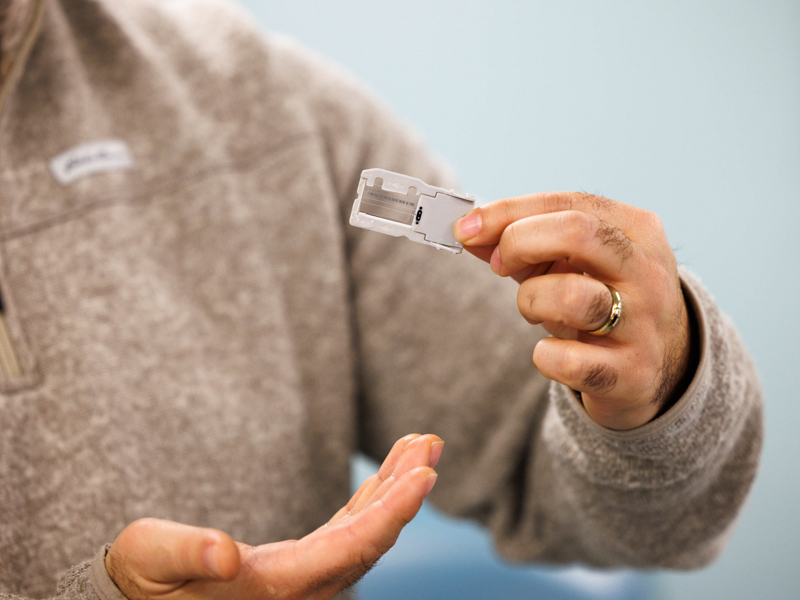
For years, UMMC had the equipment to do NGS, but not much else. The machine, not much larger than a mini-fridge, stayed in storage. While the Medical Center already had NGS capabilities for research purposes, starting a clinical program required validationsand more specially trained employees.
In 2018, Jain became director of the molecular pathology lab. This group looks at blood, cells and genetic material to help diagnose cancers and genetic diseases.
“In March 2020, we ran our first batch of test samples on the NGS platform,” Jain said. “Then, the world changed and we had to switch gears.”
The COVID-19 pandemic pushed the molecular pathology lab to work on new projects, including standing up UMMC’s successful in-house testing program that same month. The lab made progress on NGS validation in between COVID waves, thanks to increased staff.
The lab celebrated its “go-live” date March 1, complete with a ribbon cutting and cake.
“I’m a bit emotional and proud of this moment,” Jain said.
She gives credit to all of the work done by the laboratory staff, especially Daniel Waltman and Jake Johnston, molecular pathology specialists who joined the lab in 2020 with prior experience with this NGS technology.
Waltman says NGS is the latest advancement to make the lab more effective. Last year, they debuted a robotic system that increases their ability to do clinical procedures that require DNA or RNA.
“Automation helps us ensure that we are doing the exact same thing every single time,” Waltman said. It cuts down on errors, he says, as well as gives laboratory hands a break.
At the same time, the NGS represents a shift to a more individualized approach to patient care.
“There is a big push for precision medicine, and it starts with capabilities like NGS,” Johnston said. Precision medicine is the practice of using customized treatments for individual patients. “You are going to see a lot more of this in the future.”
Jain says the next goals for NGS capabilities will be to validate procedures for assessing DNA from solid tumors, like those in lung or colon cancers.
“This molecular technology is advancing very fast. What we do today is obsolete tomorrow,” Jain said. “We think of NGS as this new tech, but it’s the standard of care.”


